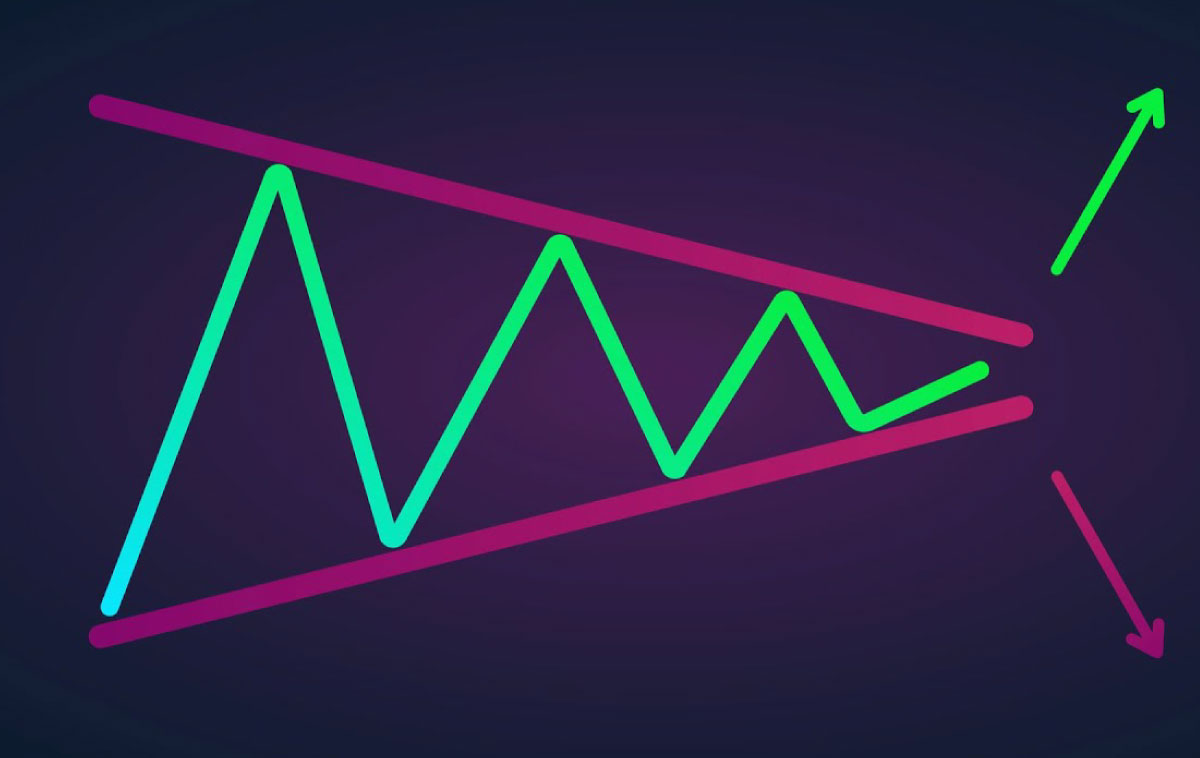Chart patterns are vital tools used by traders in technical analysis to identify potential opportunities in the market. One of the most popular chart patterns in trading is the symmetrical triangle pattern. This pattern is characterized by a series of lower highs and higher lows, which forms a triangle shape on the chart.
What Is a Symmetrical Triangle Chart Pattern?
A Converging Triangle Pattern is a technical chart pattern that forms when the price of an asset moves in a narrowing range, creating a triangle shape. This pattern is created by connecting the highs and lows of the asset’s price action with two converging trend lines. The pattern indicates a period of consolidation or indecision in the market, as buyers and sellers struggle to gain control. Eventually, one side will break out of the pattern, leading to a significant price move.
How to Spot the Symmetrical Triangle Chart Pattern
To identify a Triangle Continuation Pattern, traders must look for two converging trend lines, which connect the highs and lows of an asset’s price action. These trend lines must be drawn as accurately as possible, without forcing them to fit the price action. Traders must also look for at least two touches on each trend line to confirm the validity of the pattern. The price action within the pattern should become increasingly compressed until it breaks out in either direction.
How to Trade With the Symmetrical Triangle Pattern
Traders can use the Triangle Chart Pattern to identify potential trading opportunities in the market. When the price breaks out of the pattern, it usually signals a continuation of the previous trend. Traders can use this breakout to enter a long or short position in the market, depending on the direction of the breakout. However, it is important to wait for confirmation of the breakout before entering a trade, as false breakouts can occur.
Differences between a Symmetrical Triangle and Pennant
While Containment Pattern and pennant patterns look similar, there are significant differences between the two. The symmetrical triangle pattern is characterized by converging trend lines, while the pennant pattern is formed by two converging trend lines that are parallel to each other. Additionally, the pennant pattern is typically a shorter-term pattern, while the Ascending/Descending Triangle Pattern can last for several weeks or months.
Advantages and Limitations of the Symmetrical Triangle Pattern
The Equilateral Triangle is a popular chart pattern among traders due to its ability to identify potential trading opportunities. Traders can use the pattern to enter trades with a defined risk and reward ratio. However, it is important to note that false breakouts can occur, leading to losses. Additionally, the Coil does not provide any information on the strength or weakness of the trend.
In conclusion, the symmetrical triangle pattern is a popular chart pattern used by traders to identify potential trading opportunities in the market. Traders can use the pattern to enter trades with a defined risk and reward ratio. However, traders must be aware of false breakouts and limitations of the pattern. By combining the symmetrical triangle pattern with other technical indicators and analysis, traders can increase their chances of success in the market.
